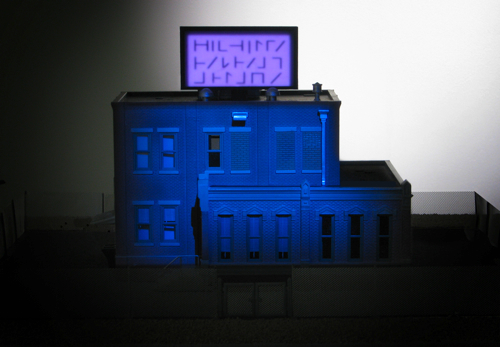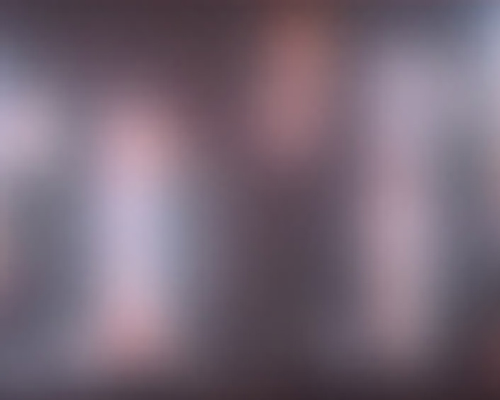
How do we read this “Noise?”
How we process, digest and communicate with the world around us has always been a fascinating, mysterious and essential part of life. It involves language sometimes, but many other modes of expression as well. That’s what is delved into for the show “Noise Field,” curated by New York transplant, writer and performer Annie Hollingsworth, and it is a complex submersion.
It’s a submersion similar to when you ease yourself into the dark, curtained-off project room. Sit on the bench and contemplate the moving, morphing images on the wall being created by a hanging lens with a light projector behind it. Prick up your ears, and the soundtrack is an inaudible voice and synthetic music. Adjust your eyes and watch the others in the room react — or not. All together it taxes your senses. Suffice to say, it is an awesome room.
Called Night Eyes, it’s the work of an MFA student at Columbia, who, here, is going by the name mudboy (Raphael Lyon). On opening night at the Dorsch Gallery, his alter ego was playing electric keyboard in the garden, going there by the name of R.A.F.
Language becomes more concrete but still incomprehensible in two handsome sculptural pieces from Martin Murphy. “Club Amnesia” is a small replica of a building bathed in eerie blue light (with a soundtrack of a subwoofer bass). Its rooftop sign is written in unknown script. The unintelligible script continues on the Rosetta Stone-like piece, “Encrypted Tablet,” with its red-laser reading line. “It is a recently discovered language that nobody can translate yet,” explains Hollingsworth. There is, in fact, “no Rosetta Stone for it.”
English is the language of the piece in another room, but it is reworked. London’s Sam Weston cut out the words of one story to create a visual that is its own story, as it travels across one wall and takes over another.
The videos from local Odalis Valdivieso are another complex immersion and a highlight here. One work let’s you to believe, at first, that you are seeing something concrete, only to fade into something completely indefinable. Says Hollingsworth, “I feel that she has stripped out extraneous information, leaving only a visual space that is in conflict with itself. We are not able to ground ourselves in any narrative space, and so, in some ways, it is just about seeing and trying to process information.”
Trying to process “Noise Field,” which includes several other artists as well, is an intriguing and unusual enterprise. Just ask those inside the “Night Eyes” installation.
“Noise Field” runs through July 9 at the Dorsch Gallery, 151 N.W. 24th St., Miami; dorschgallery.com.
Recent Content
-
Artsarticle ·
-
Artsarticle ·
-
Artsarticle ·


